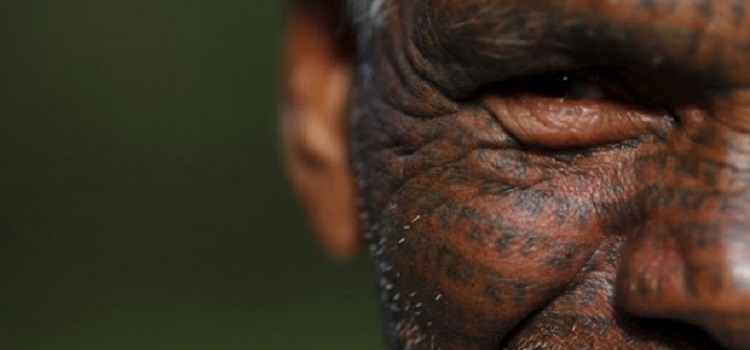Chhattisgarh’s Ramnamis: The not-so-impeccable rebels of the Caste System

The chime of devout chanting; the mass harmonises with the almighty; and the not-so-usual humdrum embellishes the site and promises nothing but – spiritual contentment and social responsibility.
The site, which I intend to draw attention to, is none other than ‘Bade Bhajan ka Mela’, the annual ‘Bhajan Mela’ of Ramnami Community, that takes place in Chhattisgarh every year. But it’s not really about the annual pageant that becomes the talk-of-the-town of the state but the ethnic group, the Ramnamis: the full-bodied ‘tattooed men/women of God’.

In this 21st century, it might sound peculiar to you to read about such a community that lives by the name of their sole God, ‘Ram’ and it is for the love of this God, they get themselves tattooed with ‘Ram’ naam (name) all over their body. This peculiarity fades away when we try to read through those inscribed words of devotion, and commitment to one’s society.
This community did not just spring up anytime in the near past but its significance dates back to the 19th century when the low caste Hindus suffered oppression and discrimination at the hands of Brahmins, who denied them access to any religious knowledge and temples. The situations were worse back then – these marginalised groups were beaten to death if they tried to break the hegemony build by those inhuman Brahmins.

The central and northern Chhattisgarh were deeply affected and crying out for help but then, instead of relying on any external bodies, they committed to fighting for this sovereignty and in turn got themselves tattooed – clearly knowing the fact that getting inked with the name ‘Ram’ all over the body would help them prevent physical attacks.
Thanks to the foundation laid by Parasu Ram, who toiled rigorously for these untouchables. Under his tutelage, the lower caste Hindus got a new identity, they felt their dormant voices were now being heard and also found themselves united with their fellowmen.

Since then there is no stopping. This community has never submitted to anyone and has found their own dwelling of solace. They believe in simple living, wear simple clothing/accessory like a special shawl called ‘Ram Odhni’ or a customary peacock circlet (worn by men), and chant ‘Ramcharitmanas’. Their only objective in life is to live for God who believes in the equality of all human beings.
Today, although this community holds a little value in a society where caste-based discrimination is on a nanoscopic level still they continue to exist in Zilas like Bilaspur, Bhatapara, Jangir-Champa, Baloda Bazar, and Mungeli. Their existence and commitment to society remind us of the situations, struggles and line of thoughts back then.

It’s sometimes sad to see them holding onto something so rigidly that no longer interests the youth of today. Their perseverance, affinity for the roots and the way of life has always been talked about at various platforms, but little could be done now to make the young lads and lasses have a deeper dive into what they stand for and how much it was important at one time.
In the end, what prevails is ‘Ram’, their sole torch bearer.




 About Author
About Author